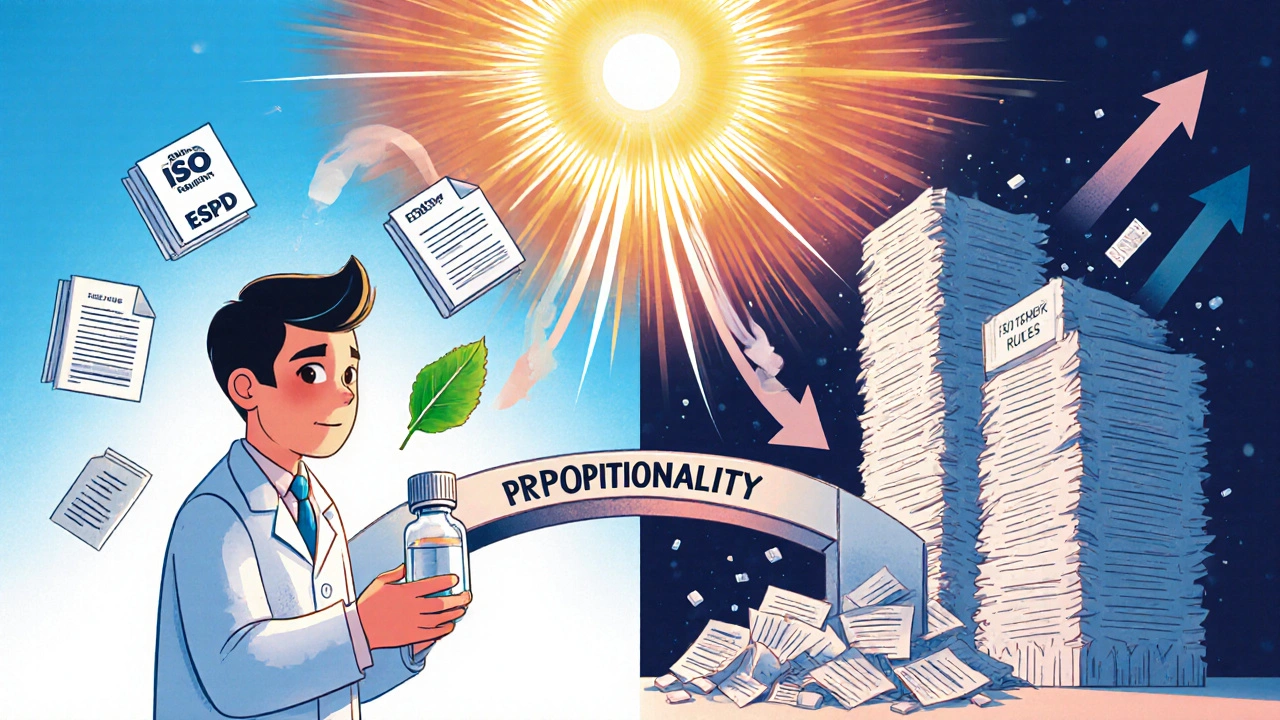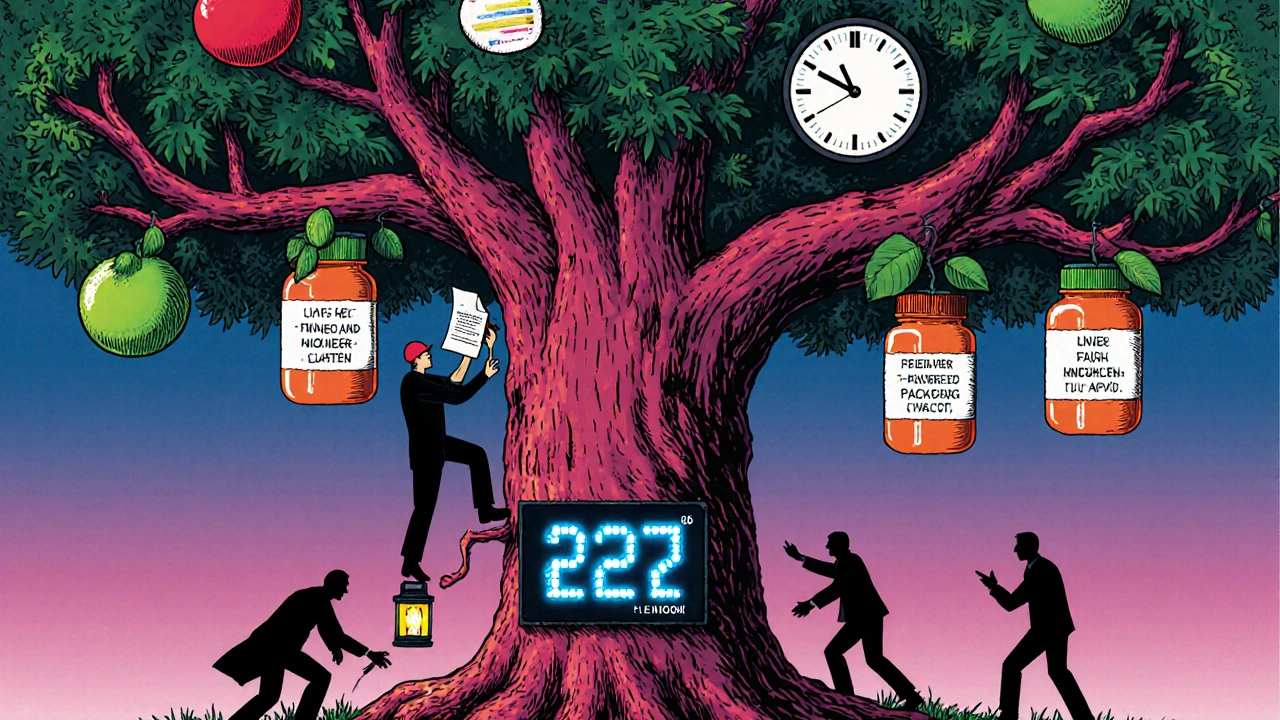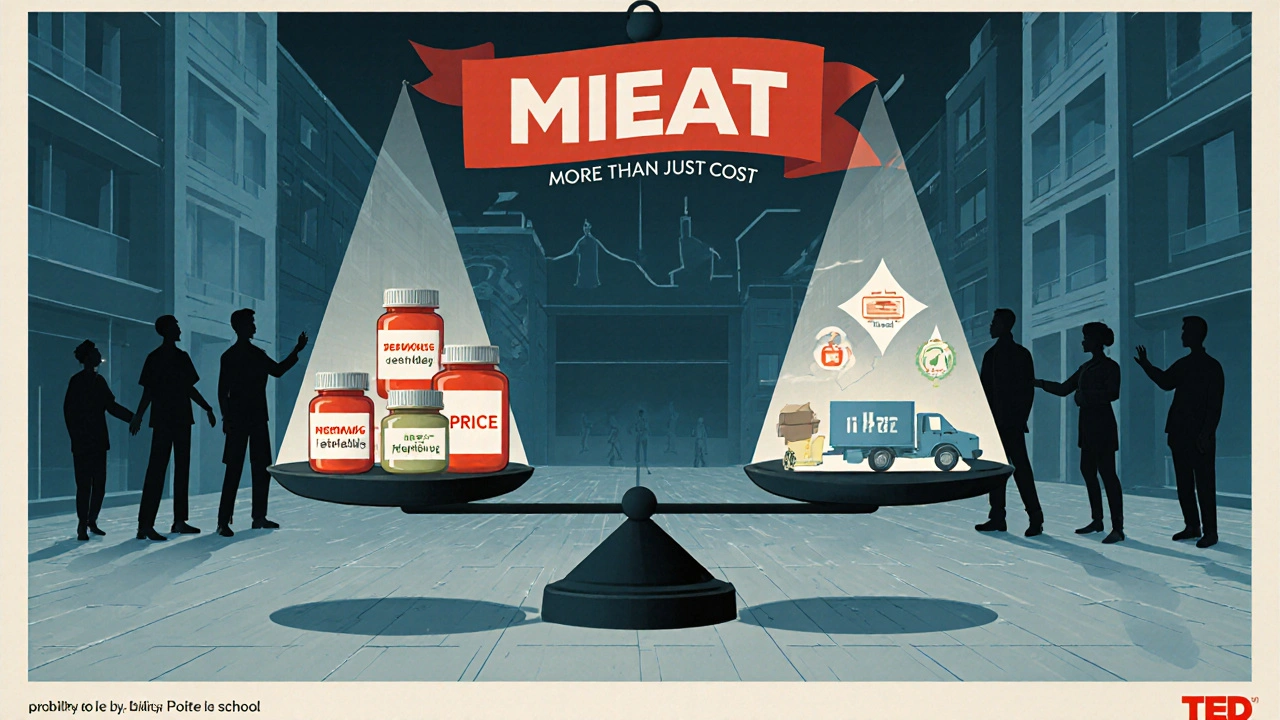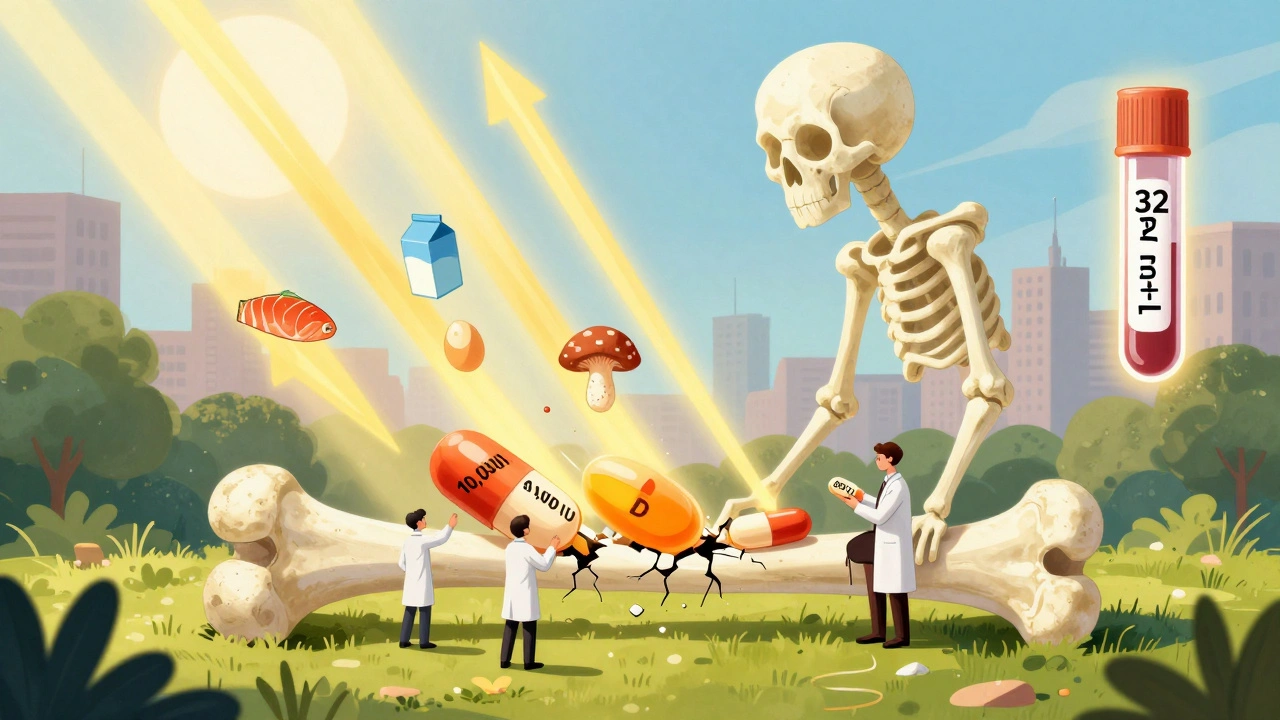When European governments buy generic medicines, they don’t just pick the cheapest option. They run structured, legally binding competitions called tendering systems-and these systems shape everything from drug prices to patient access. Unlike in some countries where procurement is fragmented or opaque, Europe’s approach is one of the most transparent and regulated in the world. Every year, public health systems across the EU spend over €2 trillion on goods and services, with pharmaceuticals making up a significant chunk. For generic drugs, which account for more than 80% of prescriptions in many EU nations, how those purchases are made determines affordability, supply reliability, and even innovation in manufacturing.
How European Tendering Works: The Core Rules
At its heart, Europe’s public procurement system is built on three principles: fairness, transparency, and proportionality. These aren’t just ideals-they’re legally enforced under EU Directive 2014/24/EU and its sector-specific counterpart, Directive 2014/25/EU. Any public body spending above €134,000 on goods (or €5.3 million for public works) must follow these rules. That includes hospitals, regional health authorities, and national drug procurement agencies.
The process starts with a public notice published in the Tenders Electronic Daily (TED), the EU’s official platform for all public contracts. Suppliers from any member state can respond-no local preference allowed. Technical specifications can’t be written to favor one company. If a tender asks for a drug with a specific inactive ingredient just because a local manufacturer uses it, that’s illegal. The requirement must relate directly to safety, efficacy, or performance.
Proportionality is the quiet hero here. A €500,000 contract for generic antibiotics can’t demand that bidders have €50 million in annual revenue. That would shut out small, specialized manufacturers. The rule is simple: requirements must match the scale of the purchase. This opens the door for niche producers, especially those making complex generics like injectables or oral suspensions, to compete on equal footing.
The Five Main Tendering Procedures Used in Europe
There’s no single way to run a tender. Europe offers five main procedures, each suited to different types of purchases. For generic medicines, the most common are:
- Open Procedure: Any supplier can submit a bid. This is the most competitive and used in about 45% of EU tenders. It’s ideal for simple, standardized drugs like paracetamol or metformin where specifications are clear and competition is fierce.
- Restricted Procedure: Suppliers must first apply to be pre-qualified. Only those who pass are invited to submit a full bid. This cuts down paperwork and is often used for higher-value contracts where authorities want to filter out unqualified bidders. About 35% of tenders use this method.
- Competitive Dialogue: Used when the exact technical needs aren’t fully known-say, for a new extended-release formulation or a drug with complex stability requirements. Authorities talk to potential suppliers, refine the specs together, then invite final bids. This is rare for standard generics but growing for complex or novel delivery systems.
- Framework Agreements: A pre-negotiated deal with one or more suppliers for a set period (usually 1-4 years). The health authority can then place orders as needed without re-tendering. Multi-supplier frameworks are preferred-they force suppliers to compete in mini-bids each time, keeping prices low. Single-supplier agreements are discouraged because they create dependency.
- Dynamic Purchasing Systems: An electronic system where suppliers can join at any time. Once registered, they’re eligible to bid on future orders. This is perfect for rapidly changing markets like generics, where new manufacturers enter frequently.
Each method has trade-offs. Open procedures attract the most bidders but require more administrative work. Framework agreements save time but can lead to supplier lock-in if not managed well. Competitive Dialogue offers flexibility but risks legal challenges if documentation is weak.
MEAT: Why the Lowest Price Doesn’t Always Win
One of the biggest misunderstandings about European tendering is that it’s just about price. It’s not. Since 2014, the EU has required most public contracts to use the Most Economically Advantageous Tender (MEAT) method. That means evaluation must consider both price and non-price factors like quality, reliability, delivery speed, and sustainability.
For generic drugs, this is critical. A supplier offering the lowest price might deliver late, have poor packaging, or lack proper cold-chain logistics. In 2023, a study by the European Public Procurement Observatory found that authorities using MEAT with clear quality weighting saw 15.7% more innovation in their awarded contracts-like better blister packs that improve adherence or more stable formulations that reduce waste.
MEAT scoring must be transparent. Each criterion must be clearly defined and weighted. For example, a tender might assign 60% to price, 20% to delivery reliability, 10% to environmental impact of packaging, and 10% to supplier audit history. All scores must be documented. If a bid is rejected, the supplier can request an explanation-and many do. In fact, 68% of cross-border supplier complaints stem from unclear evaluation criteria.
Since 2022, EU rules require that all tenders above €1 million must give at least 50% weight to non-price factors. This shift is slowly changing how manufacturers compete. They’re investing in quality systems, digital traceability, and green logistics-not just cutting costs.

Real-World Impact: Successes and Failures
When done right, these systems deliver results. In Finland, a Competitive Dialogue tender for smart insulin delivery systems led to a 32% cost reduction and 14 months faster rollout. In the Netherlands, a multi-supplier framework for generic antibiotics cut prices by 28% over three years while maintaining 99.8% supply reliability.
But failures are just as telling. In Spain, a €180 million rail signaling contract was canceled after 18 months because the technical specs were too vague. The same risks exist in pharmaceuticals. A 2023 audit found that 37% of Competitive Dialogue tenders for complex generics lacked proper documentation on why standard procedures weren’t suitable. That opened the door to legal challenges and delays.
Small suppliers often struggle. A 2023 Eurochambres survey found that SMEs spend an average of 117 hours preparing a single bid-compared to 78 hours for large firms. One French company spent months qualifying for a €200,000 framework agreement, only to receive two mini-tenders in 18 months. The effort didn’t pay off.
Meanwhile, digital tools are helping. The European Single Procurement Document (ESPD), launched in 2023, lets suppliers submit all required certifications once, then reuse them across multiple tenders. It’s cut administrative time by 40% in pilot countries. But not all platforms are equal. Dutch and Danish portals score 4.6 out of 5 for clarity. Some Eastern European systems score below 3 out of 5.
What’s Changing: Digitalization and Sustainability
Europe is pushing hard to make tendering faster, greener, and smarter. By 2027, the goal is 95% of all tenders to be electronic. That means fewer paper forms, faster submissions, and real-time alerts via TED. AI is being tested in France and Finland to help evaluate bids-early results show 30% faster scoring with near-perfect consistency.
Sustainability is no longer optional. In 2023, 68% of high-value pharmaceutical tenders included environmental criteria. That could mean preferring suppliers who use recycled packaging, have low-carbon logistics, or source raw materials responsibly. By 2028, 75% of major tenders are expected to include circular economy metrics.
There’s also a growing focus on strategic autonomy. After supply chain disruptions during the pandemic, countries are now asking: Can we rely on a single supplier in India or China for a critical generic? Some national systems now allow extra points for EU-based manufacturing or diversified sourcing. It’s not protectionism-it’s resilience.

What Suppliers Need to Know
If you’re a generic drug manufacturer trying to win EU contracts, here’s what works:
- Register on TED and set up email alerts for your product categories.
- Understand CPV codes (Common Procurement Vocabulary). Misclassifying a drug as “antibiotic” instead of “antibiotic for respiratory infections” can get your bid rejected.
- Build a clear, auditable quality system. ISO 13485 certification matters more than you think.
- Don’t just bid on price. Highlight delivery timelines, packaging innovation, and supply chain transparency.
- Join multi-supplier framework agreements-they’re the most reliable long-term path.
- Use the ESPD. It’s free, and it saves you hundreds of hours.
Success isn’t about being the cheapest. It’s about being the most reliable, the most transparent, and the most prepared.
Why This Matters for Patients
Behind every tender is a patient waiting for their medicine. Europe’s system keeps generic drug prices low-averaging 70-90% below branded versions. But it also ensures supply continuity. When a tender fails, shortages follow. When it works, patients get consistent access to affordable, high-quality medicines.
It’s not perfect. Disparities remain between Nordic and Southern Europe. SMEs still face high barriers. But the system is evolving-with clear rules, growing digital tools, and a focus on quality over just cost. That’s not just good procurement. It’s good public health.
What is the most common tendering procedure used for generic drugs in Europe?
The Open Procedure is the most common, used in about 45% of EU public tenders. It allows any supplier to submit a bid without pre-qualification, making it ideal for standard, low-complexity generic medicines where competition drives prices down. It’s transparent and fair, but requires more administrative work from the buyer.
Does the lowest price always win in European tenders?
No. Since 2014, EU rules require the use of MEAT (Most Economically Advantageous Tender), which evaluates both price and non-price factors like quality, delivery reliability, packaging, and sustainability. For high-value tenders (over €1 million), at least 50% of the score must be based on non-price criteria. This prevents suppliers from winning with cheap, unreliable products.
Can small generic manufacturers compete in EU tenders?
Yes, but it’s challenging. EU rules require proportionality-meaning a €500,000 contract can’t require a supplier to have €10 million in annual revenue. Small firms benefit from multi-supplier framework agreements and the European Single Procurement Document (ESPD), which reduces paperwork. However, many SMEs still abandon bids due to complexity, with 41% reporting they’ve given up on opportunities because of administrative burden.
What is the European Single Procurement Document (ESPD)?
The ESPD is an online form that lets suppliers declare their eligibility-like financial standing, legal compliance, or quality certifications-once, then reuse that information across multiple tenders. Launched in 2023, it has cut administrative time by 40% in pilot countries. It’s mandatory for all EU member states and is designed to reduce the burden on small businesses.
How do sustainability criteria affect generic drug tenders?
Sustainability is now a major factor. In 2023, 68% of high-value pharmaceutical tenders included environmental criteria, such as low-carbon logistics, recyclable packaging, or responsible sourcing. By 2028, 75% of major tenders are expected to require circular economy metrics. This pushes manufacturers to innovate beyond price-like using biodegradable blister packs or reducing water use in production.
What are framework agreements, and why are they important for generics?
Framework agreements are pre-negotiated contracts with one or more suppliers for a fixed period (usually 1-4 years). Once in place, health authorities can place orders without re-tendering. Multi-supplier frameworks are preferred because they force suppliers to compete in mini-tenders each time, keeping prices low and quality high. They’re especially valuable for generics, which are purchased frequently and in large volumes.
Why do some EU countries have better tendering systems than others?
Implementation varies. Nordic countries like Denmark and the Netherlands have invested in digital platforms, training, and clear guidelines, achieving 92% electronic tendering rates. Southern and Eastern European countries lag behind, with rates as low as 43%. Differences in staff training, legal interpretation, and digital infrastructure create gaps in efficiency and fairness-despite identical EU rules.







shreyas yashas
November 22, 2025 AT 06:04European tendering for generics is way more sophisticated than most people realize. It’s not just about price - it’s about reliability, supply chain resilience, and even packaging innovation. I’ve seen small Indian manufacturers win contracts by focusing on cold-chain stability and blister-pack design, not just cost-cutting. The MEAT system actually rewards quality, which is rare in global procurement.
Ragini Sharma
November 22, 2025 AT 15:49so like… the espd is basically a one-time form you reuse? that sounds too good to be true. did anyone actually get to use it without getting lost in 3 different portals?
Richard Wöhrl
November 23, 2025 AT 19:53Yes, the ESPD works - but only if the country’s portal isn’t broken. In the Netherlands? Perfect. In Romania? You’re filling out the same form three times because the system doesn’t recognize your ISO certificate. The EU mandates it, but implementation is a mess. Also, SMEs still get buried under bureaucratic noise - 117 hours per bid is insane for a company with five employees.
And don’t get me started on how some health agencies still use PDFs for tender notices. In 2025? Really?
The real win is multi-supplier frameworks. They force competition without re-tendering every six months. One French hospital saved 40% on metformin just by locking in three suppliers who compete on delivery speed. That’s smart procurement.
Also, sustainability criteria are no longer optional. I saw a tender last year that gave 15% weight to carbon footprint of shipping. The winner used rail instead of trucks. Who knew generics could be green?
And yes - the lowest bid still wins sometimes. But only if the other criteria are equal. Most agencies now have scoring sheets that are public. If your bid gets rejected, you can demand a breakdown. Most don’t bother - but you should.
Pro tip: Learn the CPV codes. I’ve seen bids rejected because someone tagged ‘antibiotic’ instead of ‘antibiotic for respiratory infections.’ It’s not a typo - it’s a legal mismatch.
The system isn’t perfect, but it’s the best we’ve got. And it’s evolving. AI scoring is being piloted in Finland. They’re automating 80% of the evaluation now. No more human bias. Just math.
Biggest threat? Political pressure. Some countries are adding ‘EU manufacturing preference’ points. Not protectionism - resilience. After the pandemic, everyone realizes you can’t depend on one factory in India for a critical drug.
Bottom line: If you’re a generic manufacturer, stop thinking like a discount store. Think like a logistics partner. Quality, traceability, and reliability matter more than price.
Brandy Walley
November 25, 2025 AT 10:39so europe spends 2 trillion on stuff and still cant get pills cheap enough for people who need them lol
Bryson Carroll
November 26, 2025 AT 02:48Oh wow the EU is so smart they make companies spend hundreds of hours to bid on contracts that pay pennies. What a brilliant way to crush small businesses. Next they'll make farmers fill out 17 forms just to sell a potato
And don't get me started on this MEAT nonsense. Price doesn't matter? Then why are we even here? This is just bureaucracy with a fancy acronym
Meanwhile in the US we just buy from whoever ships fastest and cheapest. No drama. No forms. No 15% weight for recycled packaging. Real world results
Europe's system is a masterpiece of over-engineering. Like putting a turbocharger on a bicycle
Vivian C Martinez
November 26, 2025 AT 04:39Actually, Bryson - the US system has its own problems: drug shortages, inconsistent quality, and zero transparency. Europe’s system may be complex, but it’s predictable. And predictability saves lives.
When a hospital knows their generic insulin will arrive on time, every time, with proper labeling and stability - that’s not bureaucracy. That’s care.
The EU doesn’t punish low prices. It punishes unreliable ones. And that’s the difference between a market and a system that works.
Jennifer Shannon
November 26, 2025 AT 06:16I’ve spent the last three years working with EU generics suppliers - and honestly? This system is quietly revolutionary. It’s not flashy, but it’s the reason I can walk into a pharmacy in Lisbon and get the same metformin my grandma takes in Chicago.
The MEAT approach? Genius. It forces manufacturers to think beyond cost-cutting. One company I worked with redesigned their blister packs to include a QR code that links to dosage videos in 12 languages. That’s not just packaging - that’s patient empowerment.
And yes, the paperwork is brutal. But the ESPD? It’s a game-changer. I watched a small Polish lab go from zero tenders to three contracts in 18 months just because they stopped re-uploading the same certifications every time.
Also - sustainability isn’t just greenwashing anymore. A supplier in Sweden now uses solar-powered warehouses for insulin shipments. They got 12 extra points on a €2M tender. That’s innovation.
And the digital divide? It’s real. A colleague from Bulgaria told me her agency still prints tender notices on paper. Meanwhile, Denmark runs everything through AI. The EU rules are the same - but the execution? Totally different worlds.
What’s fascinating is how this system is shaping global supply chains. Indian and Chinese manufacturers are now building EU-compliant QA systems just to compete. That’s not regulation - that’s influence.
Patients don’t care about procurement jargon. They care about whether their medicine works, arrives on time, and doesn’t cost half their salary. Europe’s system, flaws and all, delivers that.
It’s not perfect. But it’s the only system I’ve seen that actually links procurement to public health outcomes. Not just profit margins.
Manjistha Roy
November 27, 2025 AT 06:13Small manufacturers in India are getting crushed by the complexity - even if the rules say they can compete. The ESPD helps, but if the portal crashes every time you upload a document, what’s the point? And why is it that only the big firms have legal teams to decode CPV codes? It’s not fair competition - it’s filtered access.
I’ve seen companies spend €50,000 on bid preparation for a €200,000 contract. That’s not entrepreneurship. That’s a tax on innovation.
But the multi-supplier framework model? That’s the only reason small players survive. One supplier I know won three mini-tenders last year - barely broke even, but kept the factory running. Without frameworks? Gone.
Also - why is no one talking about the fact that tendering systems don’t account for raw material volatility? A supplier can bid low on paper, then get crushed when API prices spike. That’s not risk-sharing - that’s setting them up to fail.
EU rules need to add a ‘price volatility buffer’ clause. Otherwise, you’re just encouraging suppliers to ghost contracts after winning.
Katy Bell
November 28, 2025 AT 18:16I just want to say - thank you for writing this. I work in public health in rural Ohio, and we’re still buying meds off a spreadsheet from 2012. Reading about how Europe does this made me cry a little. Not because it’s perfect - but because it’s possible.
Imagine if we treated medicine like a public good instead of a commodity. Just… imagine.
Linda Rosie
November 29, 2025 AT 21:04Framework agreements reduce administrative burden. Multi-supplier models enhance competition. MEAT ensures quality. ESPD reduces duplication. Digitalization improves transparency. These are not innovations - they are baseline standards for responsible public spending.
Suresh Ramaiyan
November 30, 2025 AT 20:42It’s funny - Europe’s system feels like a slow, careful dance. Every step is documented, every weight is justified. It’s not fast. It’s not sexy. But it’s built to last.
Compare that to the US - where the fastest bid wins, and if the pills arrive late, well, that’s just business.
I think the real question isn’t whether Europe’s system is better. It’s whether we’re willing to sacrifice speed for reliability. Because when your child needs asthma medication, you don’t want the cheapest option. You want the one that won’t fail.
And that’s not procurement. That’s love, dressed in bureaucracy.
Kezia Katherine Lewis
December 1, 2025 AT 22:57The strategic autonomy angle is under-discussed. Post-pandemic, EU tenders now explicitly factor in supply chain diversification - not as a trade barrier, but as a risk mitigation metric. This is the quiet evolution of procurement into national security policy.
It’s not ‘buy European.’ It’s ‘buy resilient.’ And that’s a profound shift in public value.
Henrik Stacke
December 3, 2025 AT 00:56Having worked in both UK and German public procurement, I can confirm: the cultural gap in implementation is wider than the legal gap. German agencies treat tendering like a sacred ritual - every document, every score, every audit trail. British ones? Often a rushed formality.
And yet, the rules are identical. So why the disparity? Training. Leadership. Institutional memory.
The EU sets the stage - but local actors write the play.
Suzan Wanjiru
December 3, 2025 AT 01:22One thing no one mentions: the real winners aren’t the big pharma giants. They’re the niche labs making injectables or oral suspensions. The big guys don’t bother with €500k contracts. But for a small EU-based lab? That’s their entire revenue stream.
The proportionality rule? That’s the unsung hero. It lets the underdog play.
And honestly? That’s why this system works. It doesn’t just serve the state. It serves the small.
Ross Ruprecht
December 3, 2025 AT 15:10Wow. So much paperwork. I’m tired just reading this.